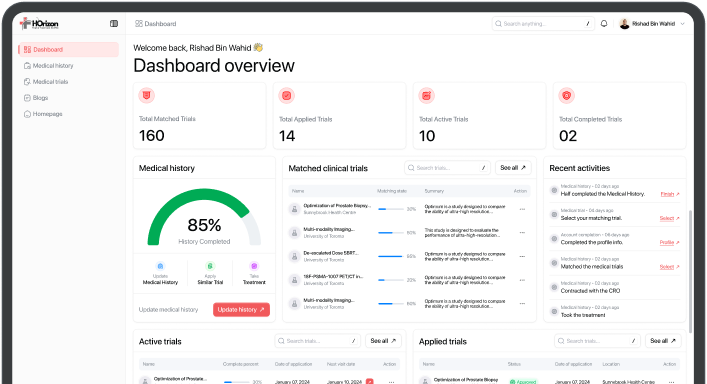Phase II High Dose Brachytherapy and Low Dose Rate Brachytherapy as Monotherapy in Localized Prostate Cancer
Contact information
Wendy Parulekar
Ottawa Hospital Research Institute
Ottawa, Ontario, Canada, K1H 8L6
Basic information
N/A
N/A Age
232 Enrollment
Trial Details
Brief Summary
The purpose of this study is to evaluate the dose of High Dose Rate (HDR) brachytherapy chosen for this study as well as a commonly used alternate form of brachytherapy called low dose rate (or seed) brachytherapy. Investigators would like to understand how these treatments control the prostate cancer and look at their short and long term treatment related side effects. The dose of radiation for HDR brachytherapy for this study has been changed since the study started. Other studies using the dose of radiation for HDR brachytherapy that was originally chosen for this study (Arm 2) found that this dose of radiation may be linked to a greater chance of the cancer coming back in the prostate. Therefore since March 2020, for new participants entering the study, a new HDR brachytherapy arm with a higher amount of radiation given over two doses will be tested in this study
Official Title
A Randomized Phase II Trial Evaluating High Dose Rate Brachytherapy and Low Dose Rate Brachytherapy as Monotherapy in Localized Prostate Cancer
Selection Criteria
Eligibility Inclusion Criteria
-
Histologically confirmed adenocarcinoma of the prostate diagnosed within the last 9 months. Patients on active surveillance with evidence of disease progression are eligible to the protocol as long as they meet the eligibility criteria and have a recent prostate biopsy (within 9 months).
Patients with low or intermediate risk prostate cancer are eligible according to the following guidelines:
• TNM classification:
Clinical stage T1-T2 and Gleason 6 and PSA <20 ng/mL (Low risk)
Clinical stage T1-T2 and Gleason 7 (3+4) and PSA < 15 ng/mL and ≤ 50% of positive cores (Intermediate risk)
Eastern Cooperative Oncology Group status 0-1.
Bone scan and pelvic CT scan/MRI within the last 6 months at the discretion of the treating physician.
Patient must be ≥ 18 years of age.
Judged to be medically fit for brachytherapy.
Prostate volume by Trans-rectal Ultrasound (TRUS) or Magnetic Resonance Imaging (MRI) ≤ 60 cc within the last 6 months.
American Urological Association (AUA) score ≤ 20 (alpha blockers allowed) within the last 4 weeks.
Patient is able (i.e. sufficiently fluent) and willing to complete the quality of life questionnaires in either English or French.
Patient consent must be appropriately obtained in accordance with applicable local and regulatory requirements. Each patient must sign a consent form prior to enrolment in the trial to document their willingness to participate.
Patients must be accessible for treatment and follow-up. Patients registered on this trial must be treated and followed at the participating centre.
In accordance with CCTG policy, protocol treatment is to begin within 12 weeks of patient randomization.
Patients must be willing to take precautions to prevent pregnancy while on study.
Patients with a prior or concurrent malignancy whose natural history or treatment does not have the potential to interfere with the safety or efficacy assessment of the investigational regimen are eligible for this trial.
Eligibility Exclusion Criteria
-
Prior or current bleeding diathesis.
Previous androgen deprivation therapy (ADT).
Alpha-reductase inhibitors (ARIs) within 90 days of randomization.
Radical surgery for carcinoma of the prostate, prior pelvic radiation, prior chemotherapy for prostate cancer, prior TURP, prior cryosurgery of the prostate.
Evidence of metastatic disease (radiology investigations at the discretion of the treating physician).
Any serious active or co-morbid medical conditions, laboratory abnormality, psychiatric illness, active or uncontrolled infections, or serious illnesses or medical conditions that would prevent the patient from participating or to be managed according to the protocol (according to investigator's decision).
